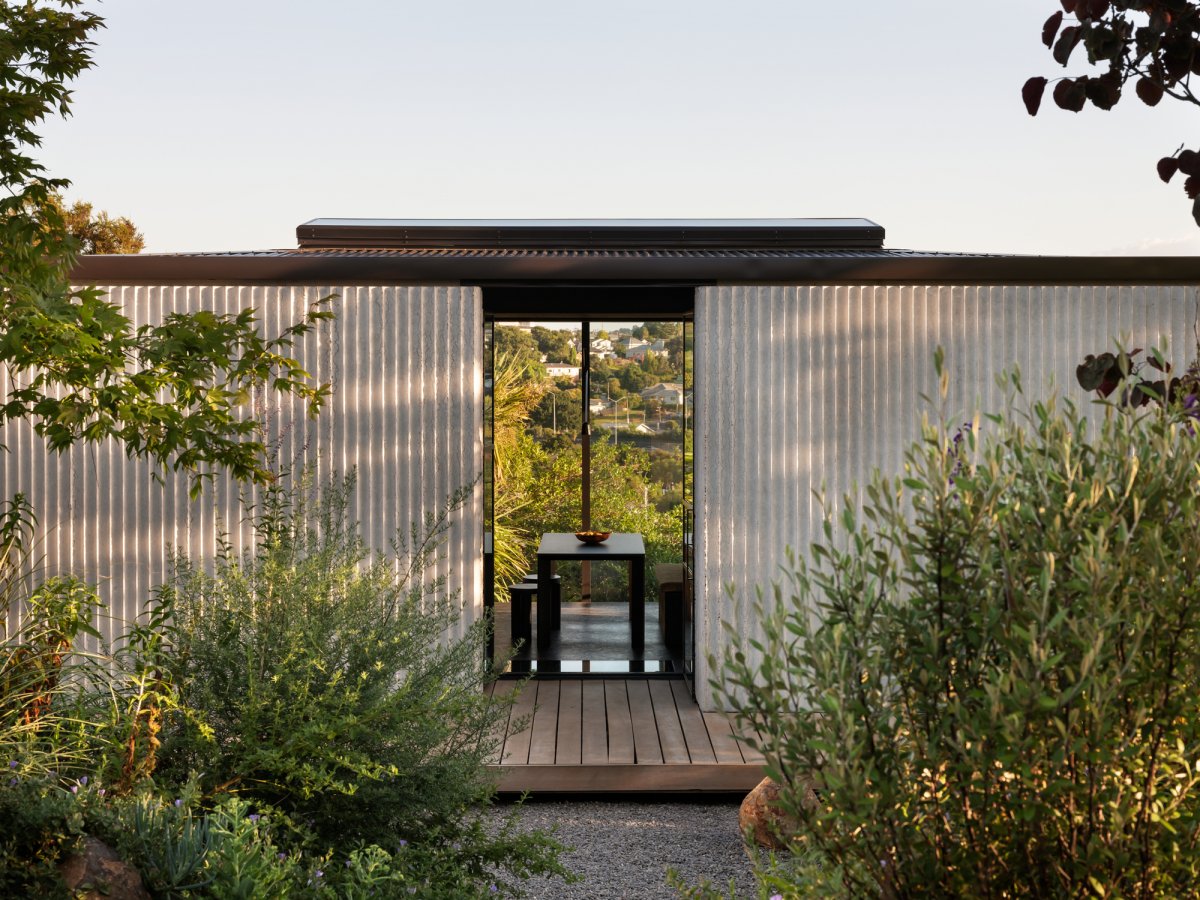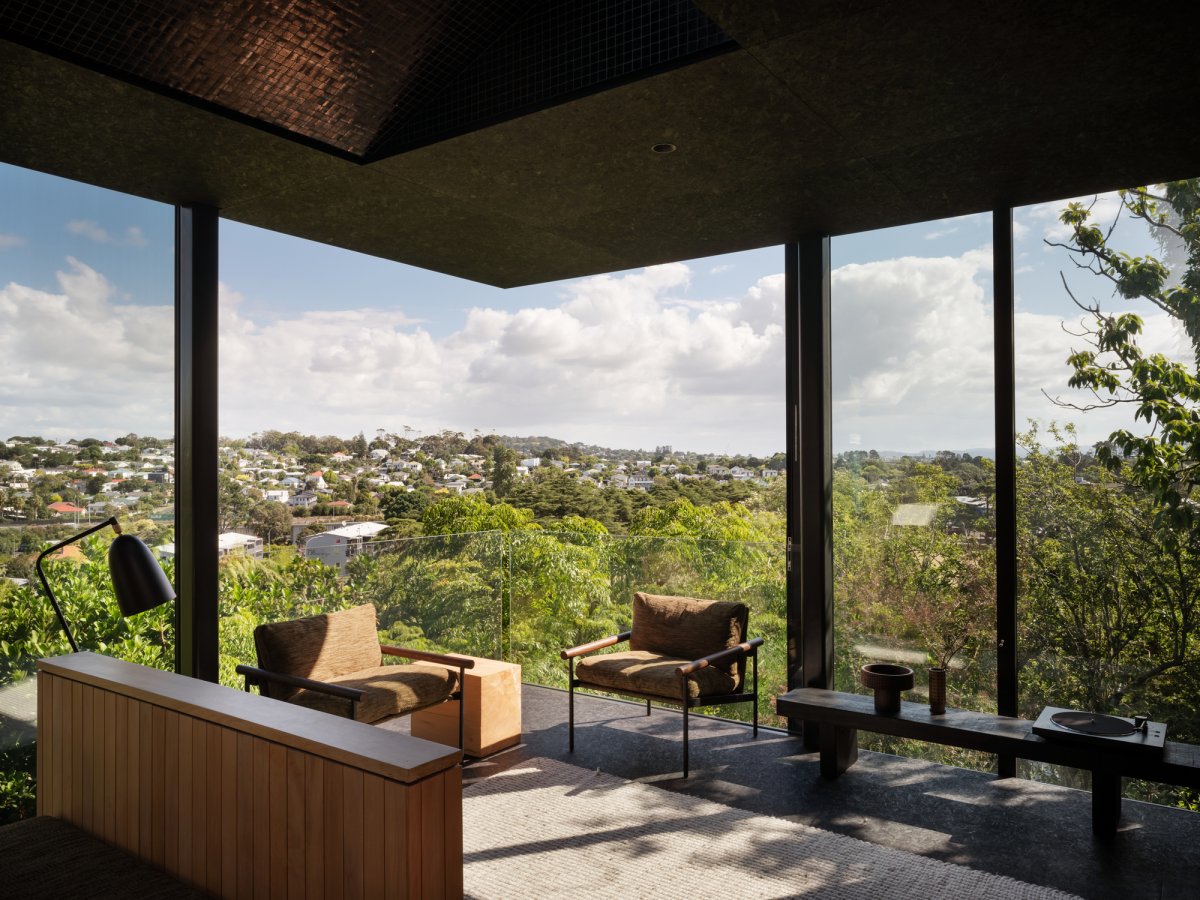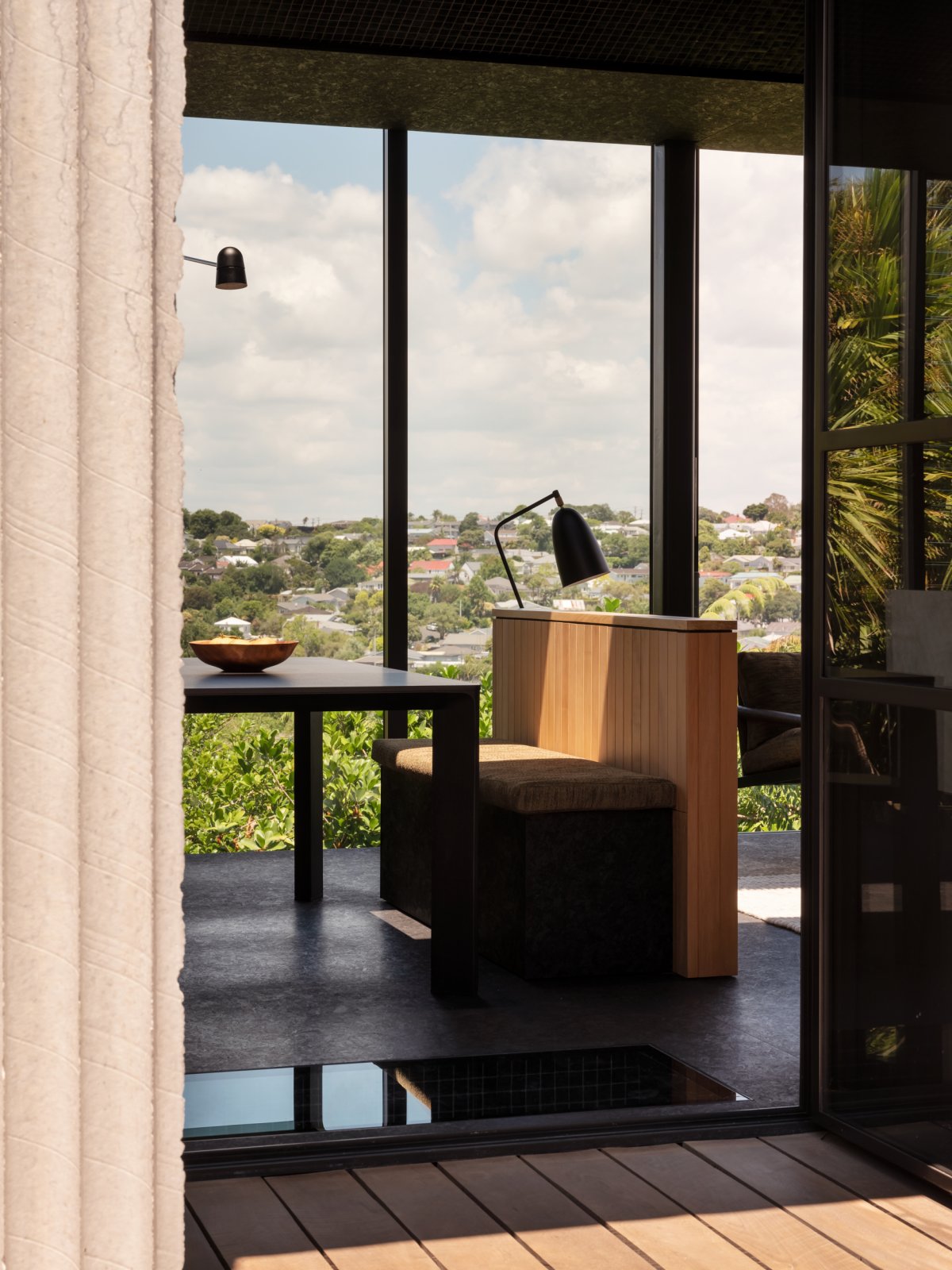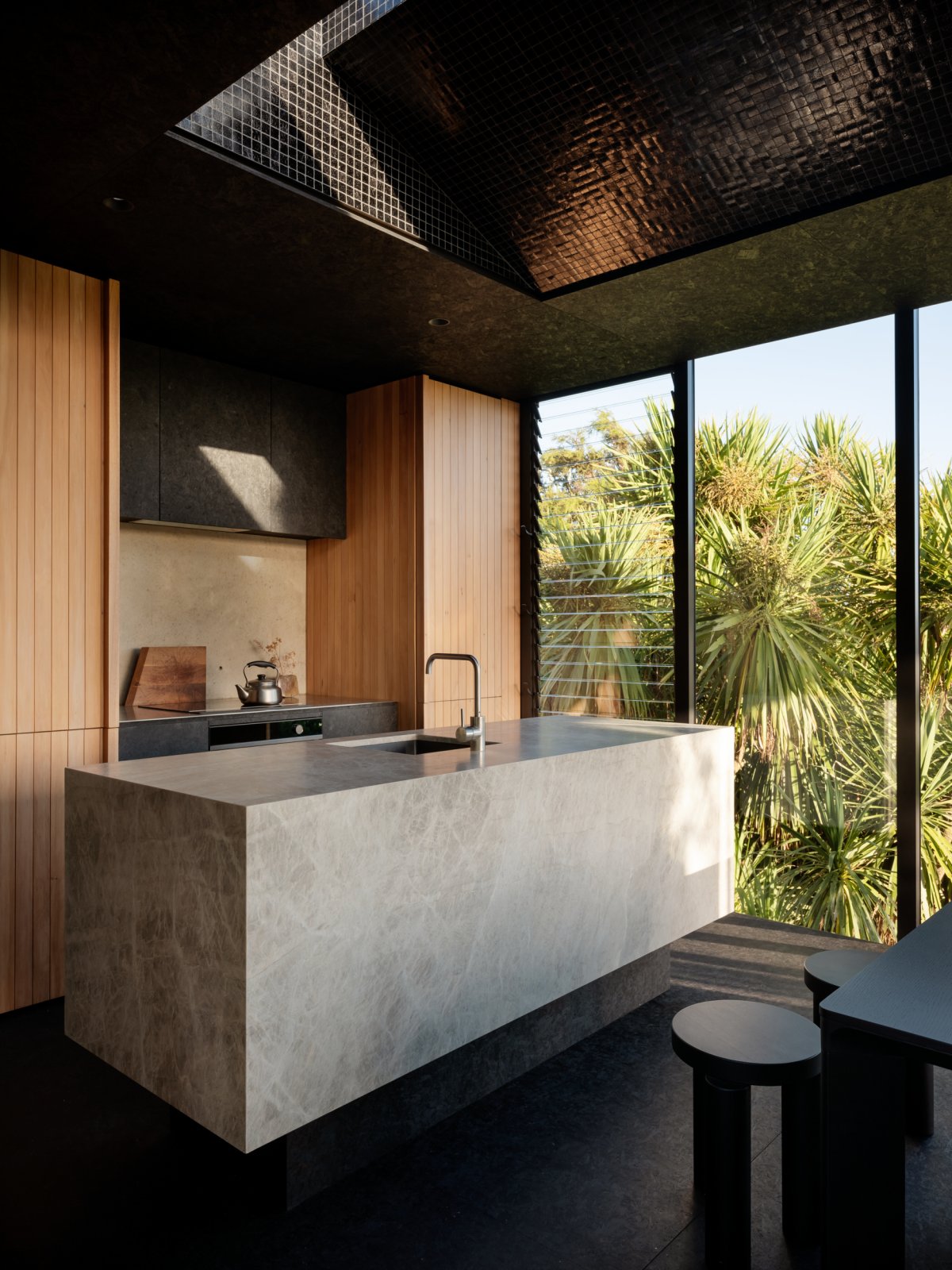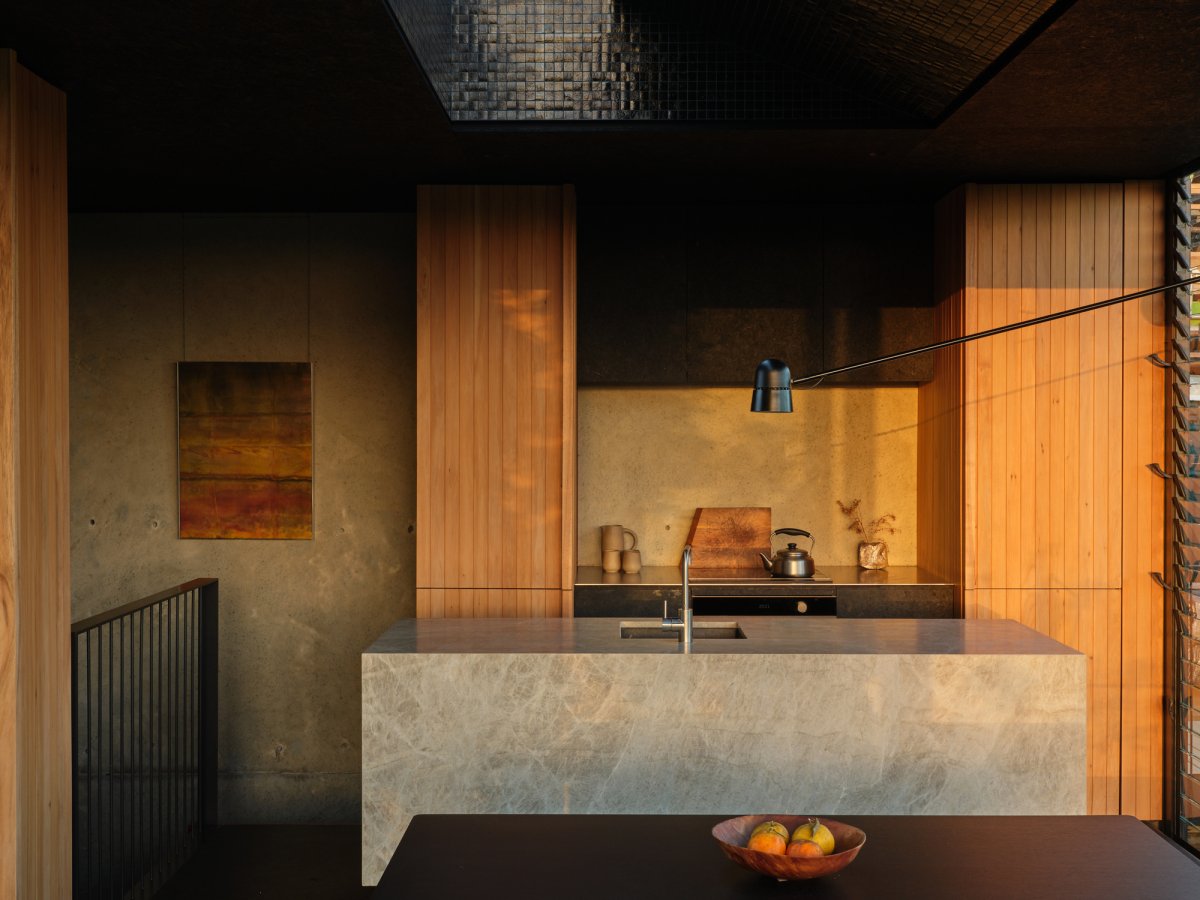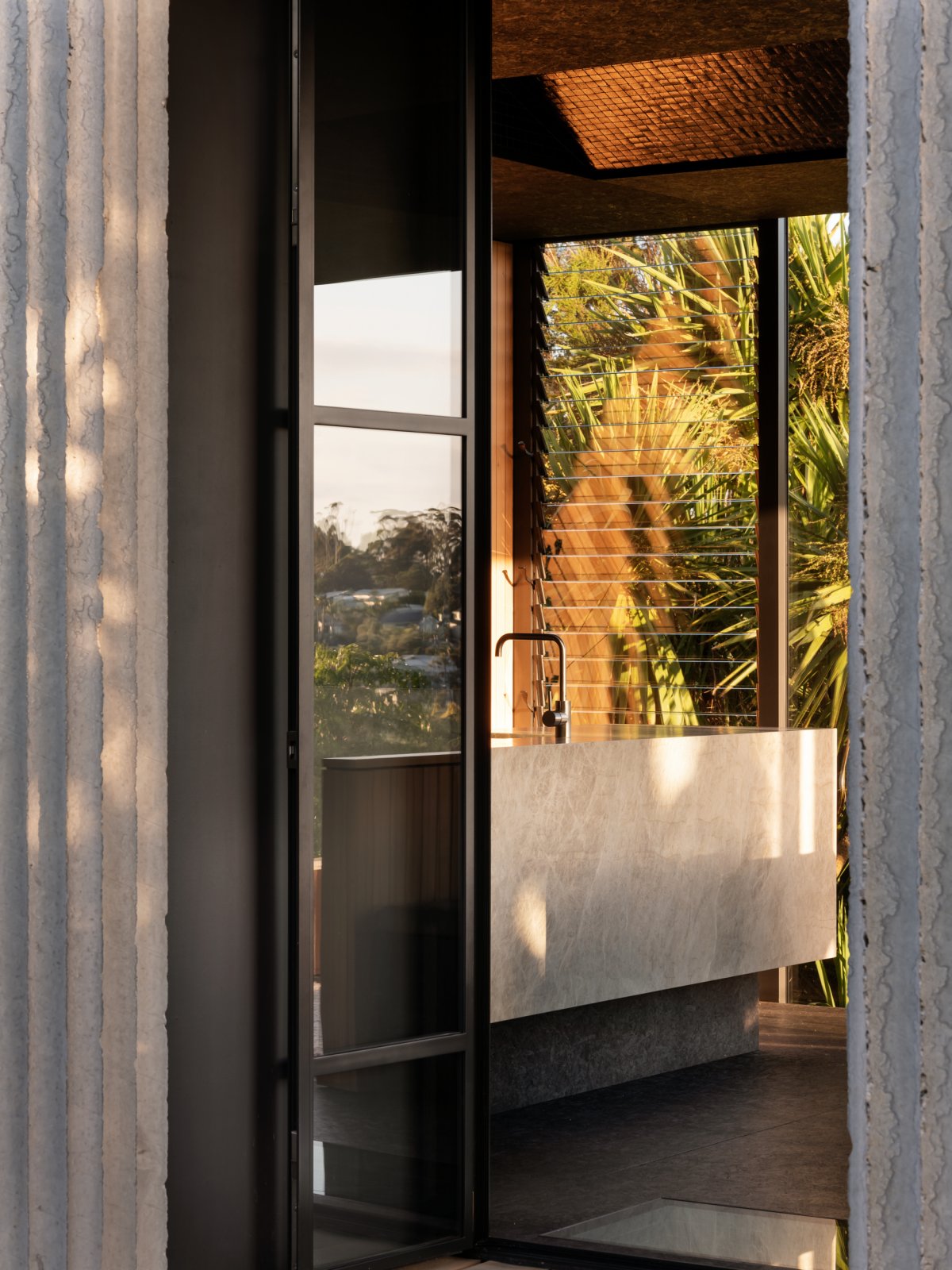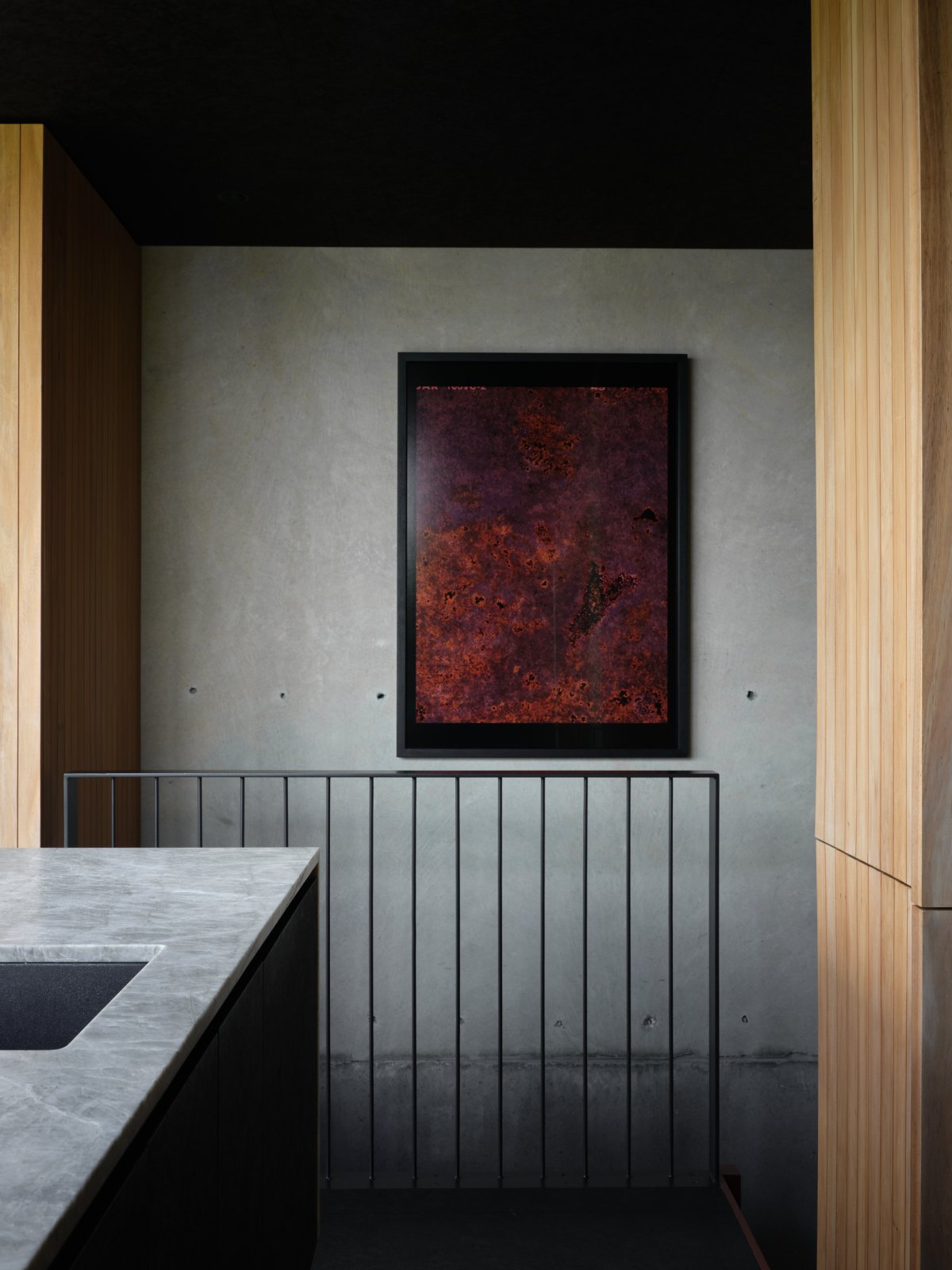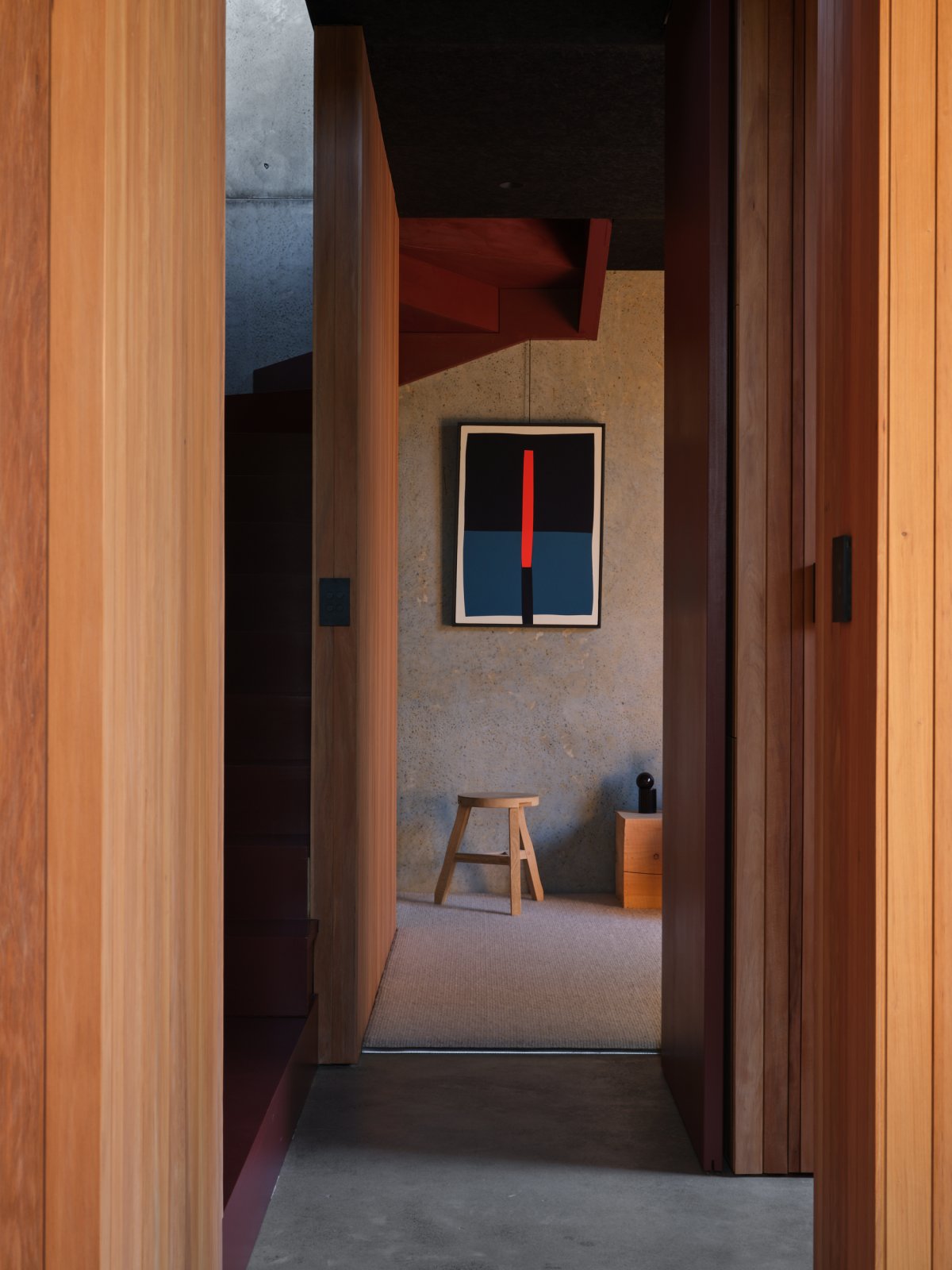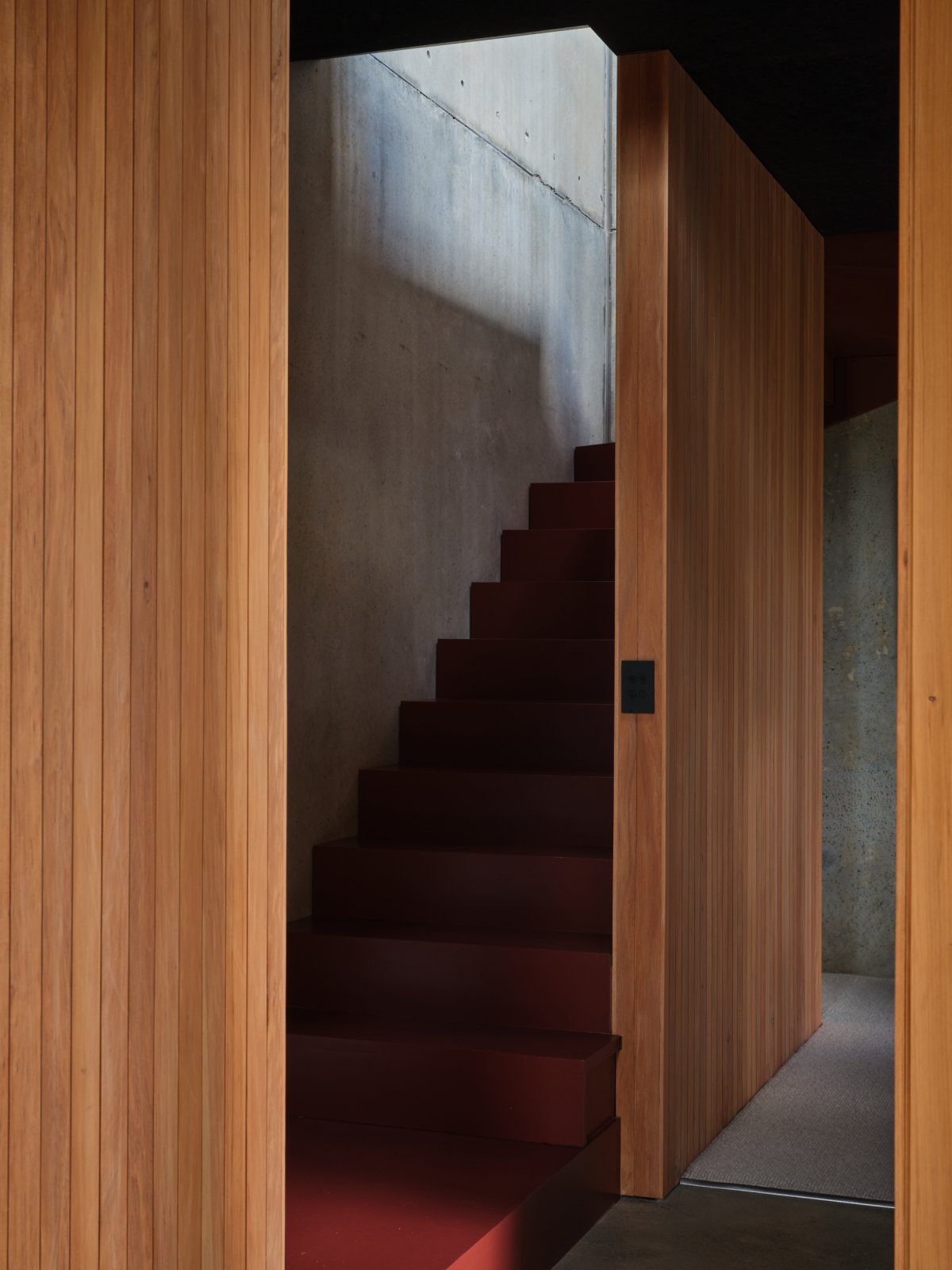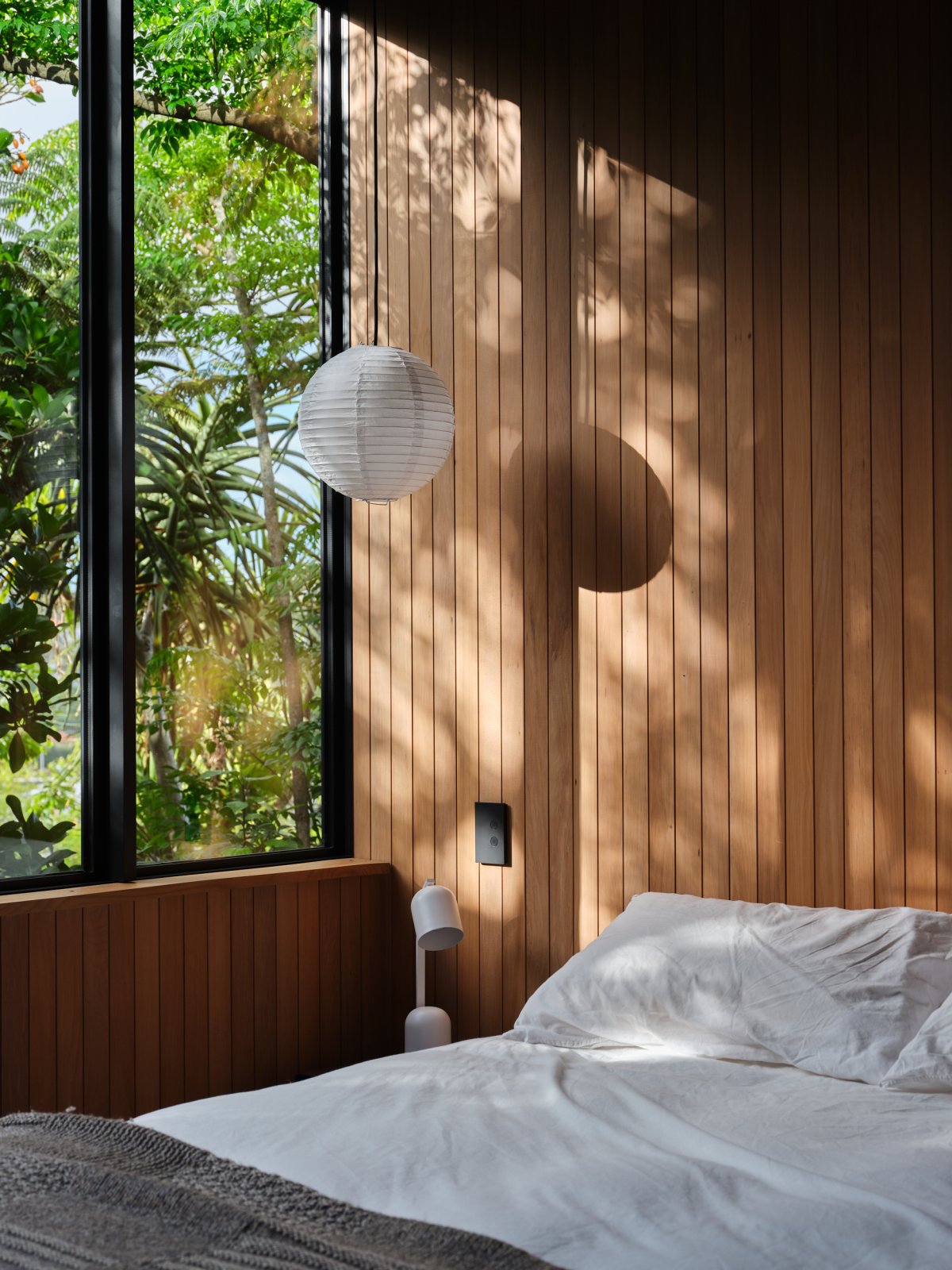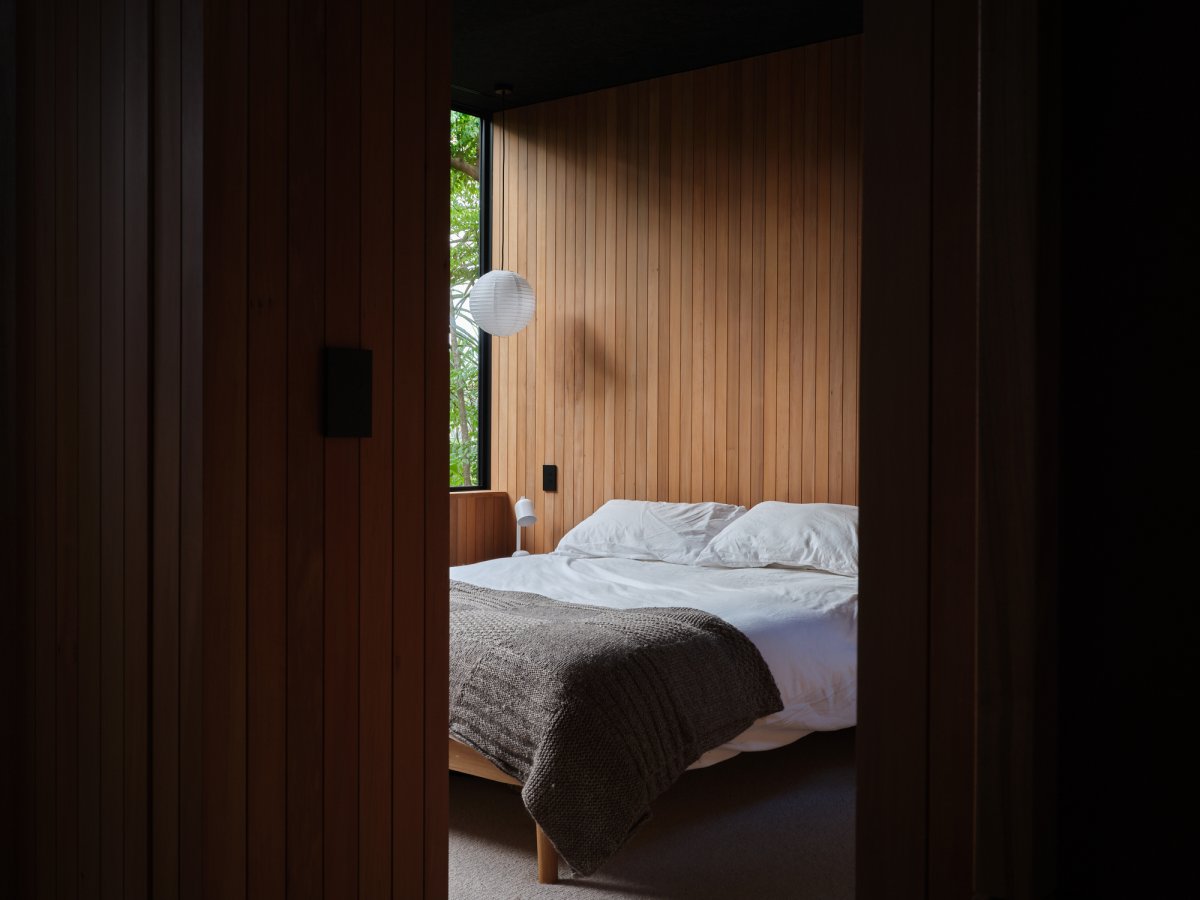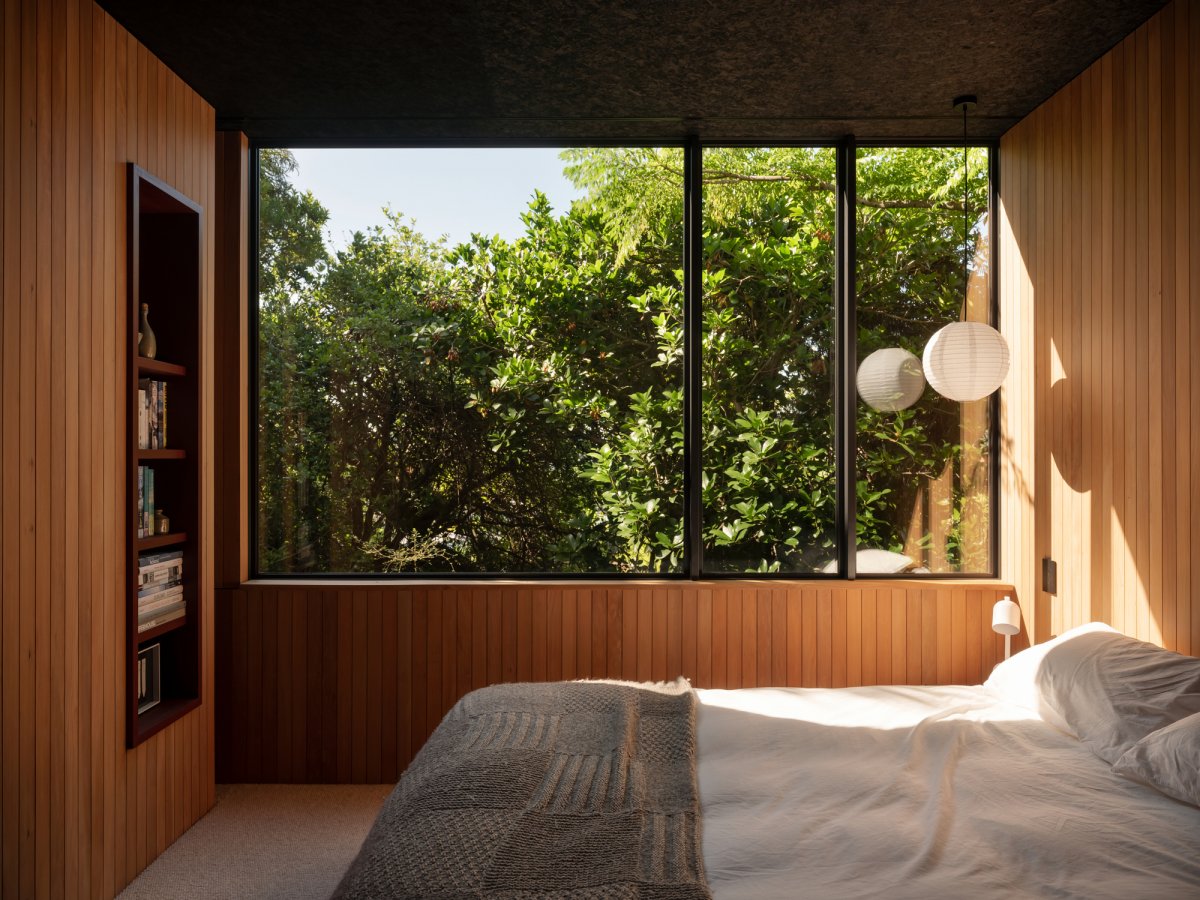
Perched looking out from its elevated position, the modest two-bedroom home feels removed and transportive, despite being embedded amongst residences in the Auckland suburb of Grey Lynn. While inner-city living has its multitude of benefits, there exists an undeniably compromising closeness between residences, where feeling separated is not always a given.
By creating a protective shell of sorts, Lightly Weighted feels both removed and private, where outward views connect to nature as a priority. The small 85-square-meter home sits on an equally modest site of 280 square meters. The clever manipulation of the building form to engage with natural light throughout the day, while maintaining privacy, creates interesting moments that feel sculptural.
Anchoring the home to its site sees the use of fluted concrete formwork to create a sense of permanence. As a new insertion to an existing milieu, the structure sits pushed up toward the boundary, creating a courtyard garden in the center of the site. The environment is folded into the home and therefore celebrated in different ways through the spaces created. The intuitive floor plan is formed from a place of restraint and efficiency.
Although spread over two levels, the burrowing of the lower level into the sloping site allows a reduced presence from the approach. It provides a considered engagement with the site, whereby the bedrooms are restful, set within the native vegetation below, and feel completely removed from its urban environment. Framing the upper level, the fluted concrete walls sit to the north and east, pulling the overall form together and recalibrating an inward-directed focus.
Light, shadow, and materials have a symbiotic relationship here. The robust external form opens up from within, with glazing providing a connection to the wider streetscape and surrounding natural elements. Light and shadow inform an ever-changing palette. Exposed concrete forms a thermal moderator, black floors and ceilings compress and absorb light, Totara timber wall linings provide warmth and consistency for the vertical elements in the room, while the stone bench is raised on a plinth to create an anchor to the space – designed as a piece of furniture. With the primary focus of the house being away from the sun, it provided a special opportunity to consider how best to let it back in. Exploring how light can be amplified, a 4.2-meter-long 'slot' was inserted at the apex of the roof.
The tiled 'scoop' is set at an angle to encourage low winter sun, whilst in summer, the narrowness means that the living spaces are not overwhelmed by sunlight throughout the day. Fluted concrete walls anchor the house on two sides, providing a protective veil from adjacent neighbors, whilst the other two walls are completely glazed, which focuses specifically on the wider aspect and surrounding context. The corner of the house opens to form a covered but exposed sitting area in the summer months.
- Interiors: Oli Booth Architecture
- Photos: Sam Hartnett
- Words: Qianqian

